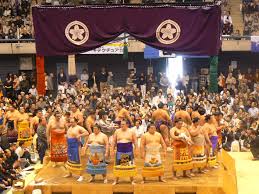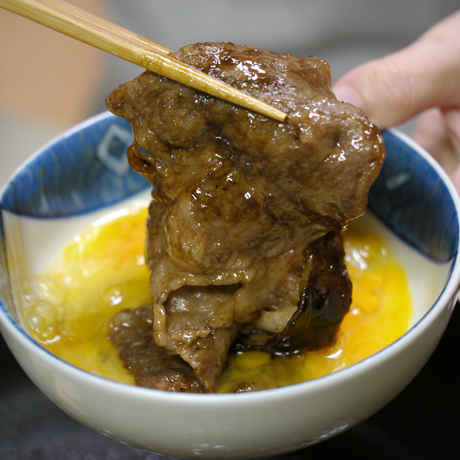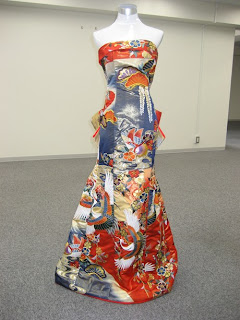Japanese Luxury Dress to Japanese Life, Culture, Tradition
Kunihime Kimono Dress made from Japanese authentic kimono suitable for stage costume, red carpet, host dress, event dress... For people who have interest in Japanese life.
Friday, September 7, 2012
Sunday, May 20, 2012
Pink Dress
Just for reference, our new pink dress. (brand new)
The actual color: Like upper photos (light color) in a lighter room.
(below 2 photos were taken at the photo studio in darker place.)
Size: M-L. Height Up to 170cm (can be cut to your size)
The actual color: Like upper photos (light color) in a lighter room.
(below 2 photos were taken at the photo studio in darker place.)
Size: M-L. Height Up to 170cm (can be cut to your size)
Wednesday, December 8, 2010
Seals - hanko
We Japanese use seals (in Japanese, "Hanko") on many occasions. In fact, there are 2 types of seals: registered seals and personal seals.
Registered seals must be registered at the local administrative office (ex city office) where the resident lives to identify that the seals actually belong to the person registered.
In most companies, businessmen stamp their seals on documents they have made to signify that they will be responsible for the contents, or to stamp documents circulated to signify officially that they have taken a look at them. Thus, seals are necessary in business interactions.
Also, seals are used to express agreement in contracts, to give notices to government offices, to receive designated deliveries, etc. These days, signatures are also acceptable in receiving deliveries.
For general use, personal seals are adequate, but registered seals are required for important business documents, particularly financial transaction contracts.
Saturday, November 27, 2010
Sumo
Sumo in ancient times was a sacred event to foretell an abundant harvest and to predict the will of the gods. The oldest bout of sumo recorded in history was 642 AD and it was adopted as ritual in the Court in the early 9th century.
After the 12th century, when warriors began holding real power in politics, sumo acquired a characteristic of a practical martial arty to be used in the battlefield.
In the Edo period (1600-1868), sumo bouts began to be performed as part of a show in festivals at shrines.
 It was not until the end of the Meiji period (1868-1912), when sumo was mentioned as the national sport for the first time, as the Emperor was deified under the nationalism and sumo, a Court ritual, was accepted by the government.
It was not until the end of the Meiji period (1868-1912), when sumo was mentioned as the national sport for the first time, as the Emperor was deified under the nationalism and sumo, a Court ritual, was accepted by the government.
The winner of sumo is decided when the opponent is forced out of the ring (dohyo) or when any part of his body touches the ground.
In order to become a sumo wrestler, one has to belong to one of the sumo stables. The stables take care of every aspect of the newcomers' lives including food, clothing, and housing, while training them to be a strong wrestlers. It is a man's world except for the family of the stable master.
Wrestlers are ranked according to their ability. The lowest rank is called "jonokuchi" which is the starting point. There are 9 other ranks such as jonidan, sandanme, makushita, juryo, maegashira, komusubi, sekiwake and ozeki. At the top of the ranks are the yokozuna, or grand champions.
Wrestlers above the rank of juryo are called "sekitori" and receive monthly salaries. What the other wrestlers get is just a small amount of incentive depending on their record in tournaments.
After the 12th century, when warriors began holding real power in politics, sumo acquired a characteristic of a practical martial arty to be used in the battlefield.
In the Edo period (1600-1868), sumo bouts began to be performed as part of a show in festivals at shrines.
The winner of sumo is decided when the opponent is forced out of the ring (dohyo) or when any part of his body touches the ground.
In order to become a sumo wrestler, one has to belong to one of the sumo stables. The stables take care of every aspect of the newcomers' lives including food, clothing, and housing, while training them to be a strong wrestlers. It is a man's world except for the family of the stable master.
Wrestlers are ranked according to their ability. The lowest rank is called "jonokuchi" which is the starting point. There are 9 other ranks such as jonidan, sandanme, makushita, juryo, maegashira, komusubi, sekiwake and ozeki. At the top of the ranks are the yokozuna, or grand champions.
Wrestlers above the rank of juryo are called "sekitori" and receive monthly salaries. What the other wrestlers get is just a small amount of incentive depending on their record in tournaments.
Thursday, November 25, 2010
Tea Ceremony
Tea ceremony has been a traditional Japanese art form since the 15th century. It is much more than just serving and drinking tea - it's a deeply aesthetic experience.
Another important element is shared sense of communication between the host and the guests throughout the ceremony. To entertain the guests, the host takes utmost care in every step of the preparation processes, such as choosing everything from tea utensils, to a hanging scroll, flowers, a vase and other amenities to go with the environment.
The guests, in return , are expected to express their understanding of the host's consideration and gratitude toward the host's efforts.
The level of formality may depend on the particular school of tea ceremony we follow. And, in a way, serving tea in our home to family or guests may be considered an informal extension of the ritual Japanese tea ceremony.
Tuesday, November 23, 2010
Delicious Kobe beef restaurant in Kobe
Kobe beef is known refers to cuts of beef from the black Tajima-ushi breed of Wagyu cattle, raised according to strict tradition in Hyōgo Prefecture, Japan. The meat is generally considered to be a delicacy, renowned for its flavour, tenderness, and fatty, well-marbled texture. Kobe beef can be prepared as steak, sukiyaki, shabu shabu, sashimi, teppanyaki and more.
Kobe beef is a special kind of cow's meat taken from the Wagyu cattle, which is raised in Japan. Kobe beef is known for its full flavour, tenderness, and its well-marbled texture; with polyunsaturated fats well distributed within the meat that's much healthier compared to saturated fat.
Kobe can be prepared as steak, sukiyaki, sashimi, shabu-shabu, teppanyaki etc.
Here is one of my recommended nice restaurant of Kobe Beef in Kobe where I had ever enjoyed:
"Wakkoqu"(wakkoku) in Kobe:
I had 200g Tenderloin Course Set (incl. 200g beef, Appetizer, Coffee (Bread or Rice) ): 9,500 yen
At Wakkoku, the chefs cook Teppanyaki-style, on an iron grill in front of us. (There are also grilled prawn and abalone seafood with a great wine list.)
The chef brings the meat over on a wooden tray and places salt, pepper, and a dollop of sharp mustard near our plates.
Then he slices off a strip of fat to coat the grill and roasts fresh garlic chips in it. Next, he dices the beef with a sword-sharp knife, lays it on the grill in front of us, and salts it as it sizzles.
According to our request, he slips the cubes of rich steak onto our plate. As we feel each chunk literally melt in our mouths, he starts to roast the vegetables: (carrots, crips bean sprouts, deep-purple-fleshed eggplant, mushrooms, etc)
Last comes the rice, cooked in a small portion of left-over fat, salt, chopped garlic, and the remaining flavors on the grill.
In many steak restaurants in Japan, this is one of my favorite one because of very nice beef are served.



Saturday, November 20, 2010
Sukiyaki
We will cook the food by ourselves - It is fun to cook and eat together form one pot - normally one pot for 4 people.
The below is recipe of Sukiyaki:
Sukiyaki Sauce (= warishita)
1/2 cup (100cc) of Soysauce
1/2 cup of Rice wine (Sake or cooking sake)
1/2 cup of Sugar
Ingredients (for 4 people)
Sliced beef 400-500 g (above photo)
Shiitake mushroom 100g
Long spring onion 2-3 pcs : to be sliced in 2cm size
Chrysanthemum leaves 100-200g
Shirataki (konnayaku-potato starch). 200- 300g
Greater burdock root 80g : to be thinly sliced and quickly boiled
Firm Tofu (Yaki-tofu) 1 block
Sukiyaki Sauce(warishita)
1. Put the lard in the heated pan and cook beef. When beef is cooked, add seasonings for sukiyaki sauce (warishita: soysauce, sake and sugar).
2. Move the beef to one side of the pan and add other ingredients such as shirataki, white cabbage, long onion, onion, tofu and mushrooms etc and cover the pan. (Only part of the ingredients will be soaked by sauce but they will shrink.)
3. When the ingredients shrink, mix them (among their portion of the pan) so that those on top will be soaked as well. Cook for 5 to 10 minutes.

4. Taste and adjust flavor by adding sukiyaki sauce ingredients if necessary.
5. Dip the food in the egg in your egg bowl and eat it. (egg should be beaten while you are waiting for sukiyaki cooked) The egg makes the taste mild, and it also cools the food so it won't burn your tongue.
Eat it with rice or udon which you can add in the remaining soup after you finish eating meat and vegetables!
Note) It's very important not to overcook the beef. (if overcooked, the beef gets hard)
The best season for sukiyaki is especially in cold winter - now!
Let's enjoy the Japanese best dish.
Subscribe to:
Posts (Atom)

































